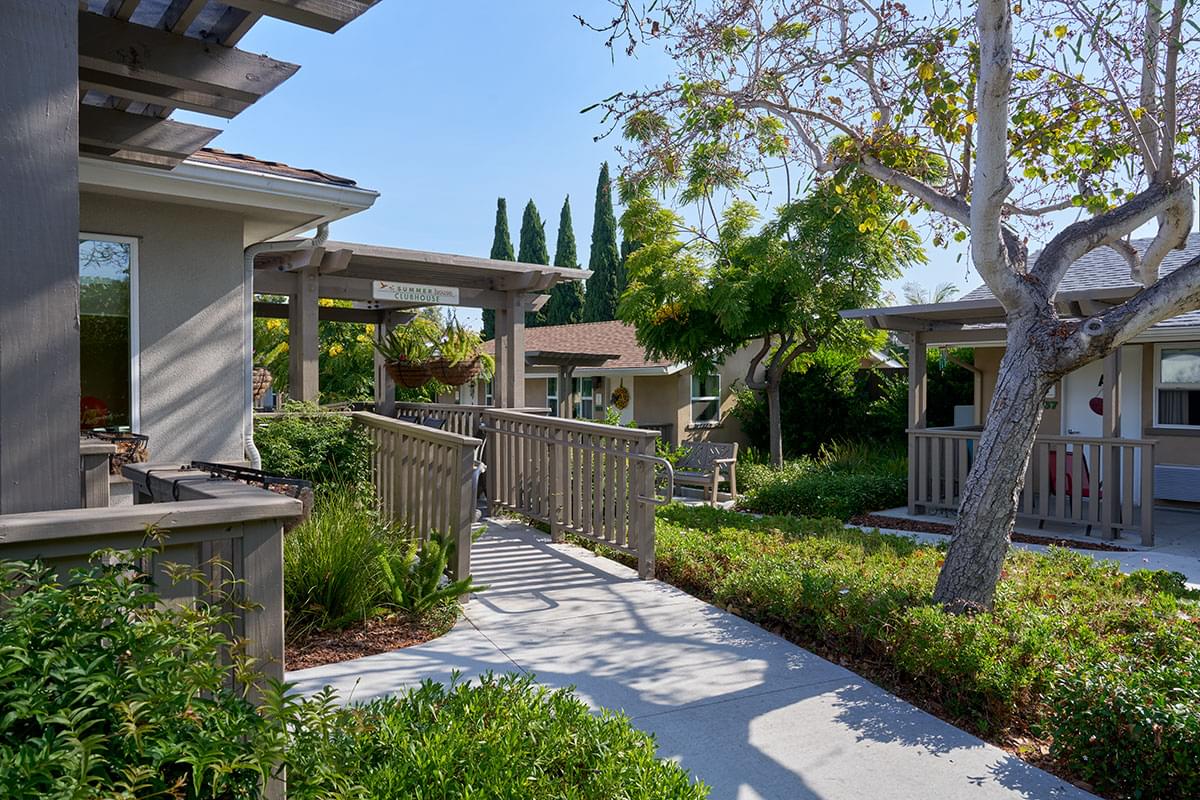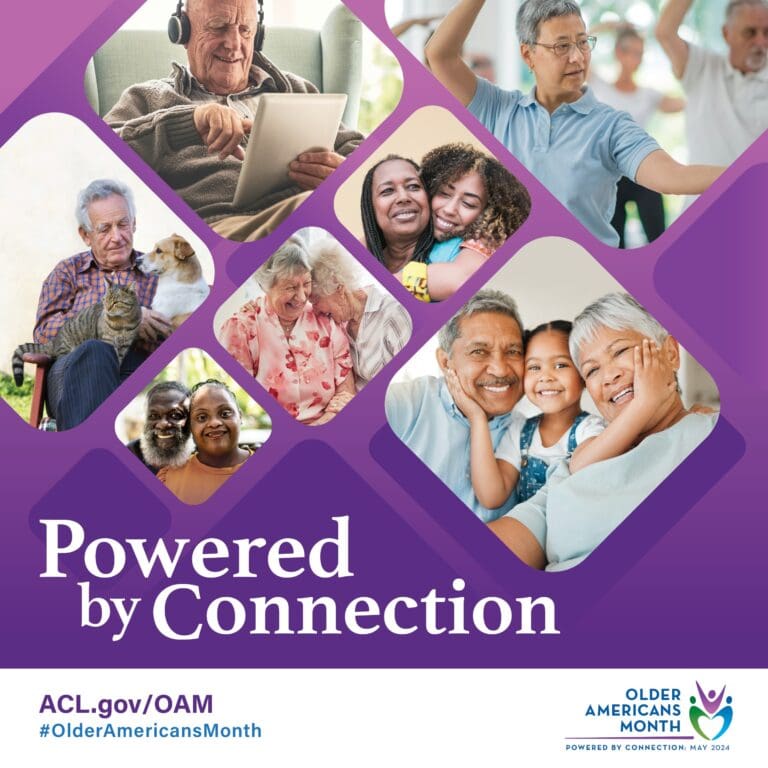April 22, 2024
Earth Day every day through Front Porch’s green initiatives
Volunteer Experience Manager Mary Kott knew Front Porch’s communities were each taking action to support green initiatives. She just didn’t know how much they were doing until earlier this year. Curious to know the extent of their efforts, she surveyed every community about their green practices including composting, solar power, electric vehicles, construction decisions, recycling and reuse, among others.
“That survey really yielded a lot more for me than I thought it would,” Mary said. “It affirmed my belief that we were doing a lot of the right things.”
Front Porch communities are making individual decisions to conserve and support the environment, and the overall impact is significant. More than half of Front Porch’s communities have replaced incandescent bulbs with energy efficient LEDs; half have drought-resistant landscaping and water efficient irrigation systems; almost two-thirds have electric vehicle charging stations; and virtually all support recycling efforts, including e-waste. On top of this, individual communities have made individual choices that support green practices, such as Meatless Mondays, tankless water heaters, and solar power projects installed or under consideration.
Nancy Frost, a resident of Canterbury Woods in Pacific Grove, has been encouraging the community’s environmental efforts since she moved in more than 10 years ago. A former employee of the Environmental Protection Agency, Nancy has developed Earth Day programs to keep residents and staff informed about the individual steps they can take. This year, in keeping with the Earth Day theme of Planet vs. Plastics, she is preparing an educational program about plastics, including how to manage the film plastics that are recyclable but not collected by waste haulers.
She’s also educating about hidden plastics. “There’s lots of things that contain plastic that we don’t think about, like tea bags and bottle caps, that you can’t put in a recycle bin,” Nancy explains. “Take away paper cups and paper food containers, they’re all lined with plastic. That makes them trash, not recyclable. So what do you do instead? You get a mug and instead of taking the paper container, you get one of the reusable plastic containers.”
Nancy urges people to take things one step at a time. “One of my display boards for Earth Day this year is going to be Kermit the Frog, and it says, ‘It’s not easy being green, but it’s do-able,’” Nancy says. “I think that’s really wonderful way to put it. It’s just minor little changes. They add up and they add up. And if one year you make a change in one direction, and then you keep that in the next year, you add another one. You don’t have to do it all at the same time. You prioritize what you can do and start doing it.”
At Vista del Monte in Santa Barbara, Executive Director Doug Tucker has been working with the community and prioritizing water conservation in multiple ways. When he first arrived, the community was reviewing its landscaping which had included a lawn in the middle of the campus. “The residents had a slogan: ‘Brown is the new gold’ because they couldn’t water the grass,” he says. The community replaced the water-greedy grass with faux grass in the middle park area and then replanted most of the campus’s landscaping with drought tolerant planting.
But that was only the first step. The community is waiting for final approval from the City of Santa Barbara to engage in phase two. “What we instructed the landscape architect to do is to utilize water saving technologies,” Doug explains. “Some of the things that we’re focusing on is storm water management and returning water back to the groundwater, so we’re putting in permeable pavers, bio basins, and a 3000 gallon catch basin at the entrances and throughout the campus that will move water around the campus for stormwater management, but also to help return water to the aquifers.”
Although the community is allotted 848,000 gallons of water a year for landscaping, it is estimated that with the landscaping changes, the community will only use about 453,000 gallons annually. The landscaping project and its efforts toward water conservation continues the theme that was originally started about 8 years ago, Doug says.
“I’m a firm believer in being an environmental steward,” Doug says. “Being in Santa Barbara with the type of community and the number of residents that we serve, I think that we have a great opportunity to show our environmental stewardship with a lot of the programs that we bring to the community.”
“When you adopt green practices, in order for it to be effective, it has to be personal,” says Mary. “The shift in our communities is exciting to see. Perhaps we need to adjust and reinvent as we move along, but this information about our green practices as an organization gives us a foundation that we up until now really haven’t had.”
In reviewing the Green Initiatives survey, Mary says, “I think that sitting for a moment and taking an inventory of everybody’s good ideas was inspirational. Now that we’ve pulled all this information together, we can actually strategize around it.”


